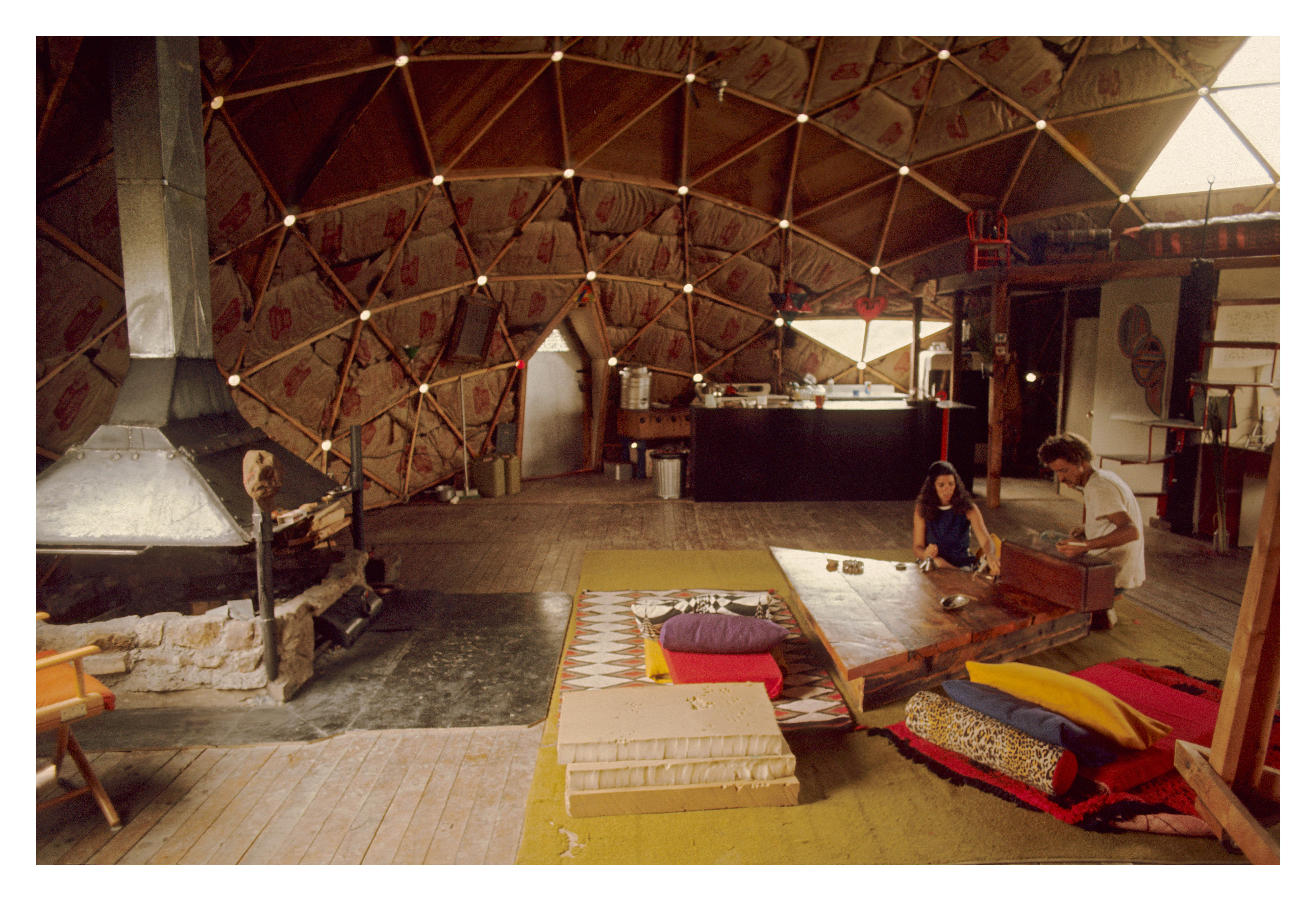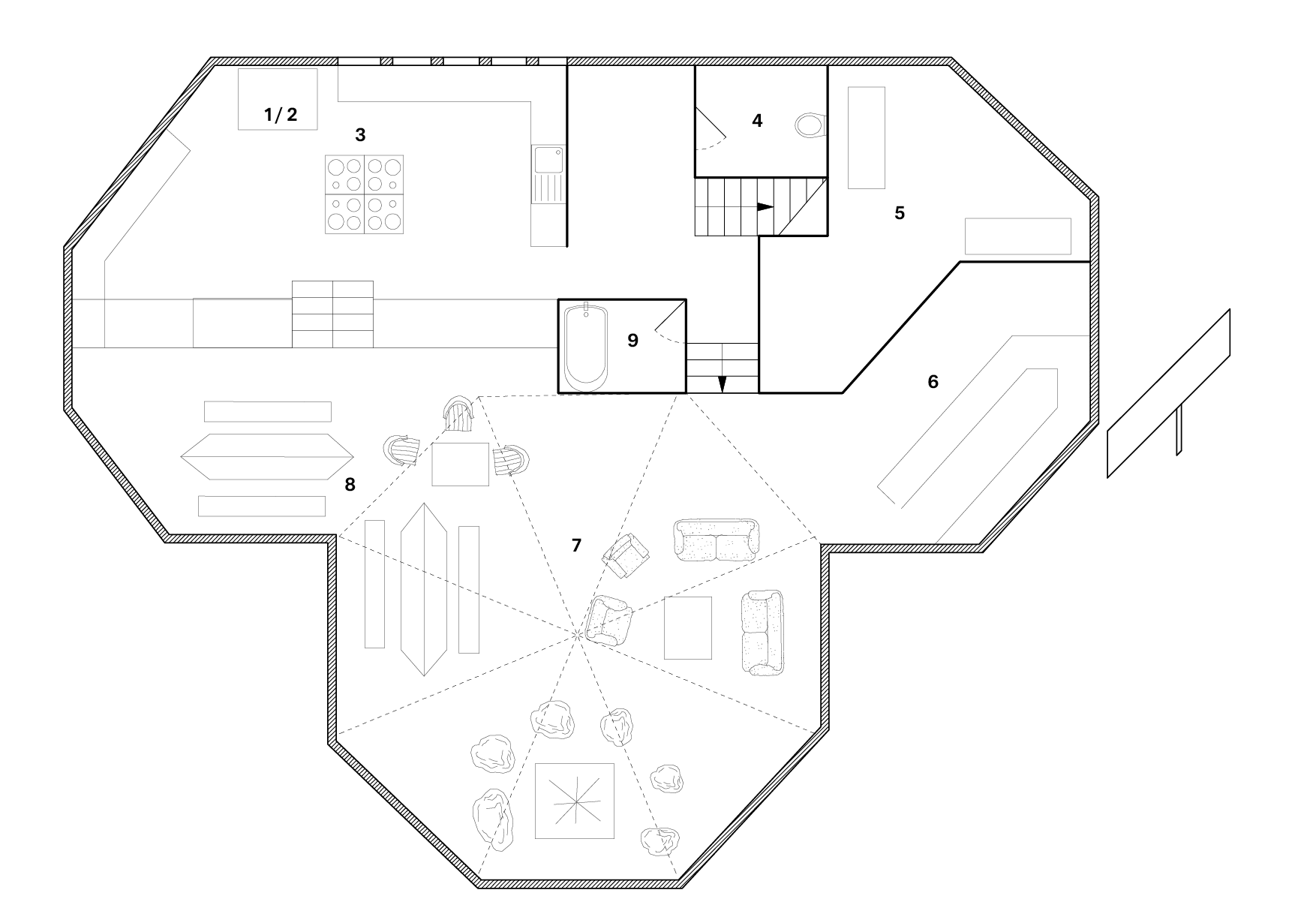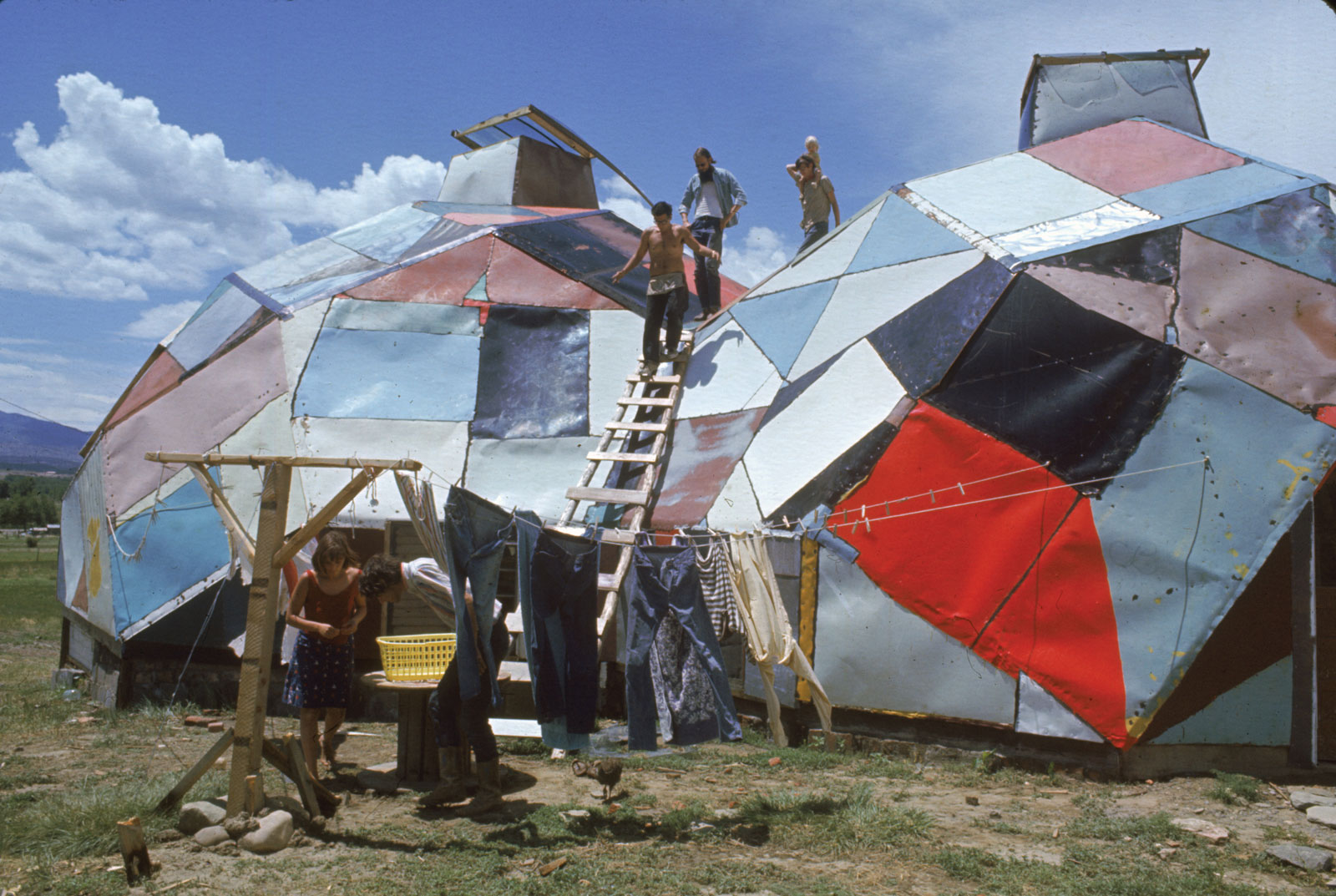Drop City
![]()
Trinidad, Colorado, USA
Experimental / Artist Colony
Single-Family Housing
Communal Property
1965 - 1973

Trinidad, Colorado, USA
Experimental / Artist Colony
Single-Family Housing
Communal Property
1965 - 1973
1 Kitchen Fridge 2 Money for purchases 3 Stoves 4 Toilet / laundry 5 Loft 6 Tooling workshop 7 Living Room 8 meal and meeting 9 Bathroom
![1965 Drop City, Community Dome Plan: Drawn from le centre de la Communaute. Architecture d’Aujourd’hui]()
Drop City was one of the first and most influential rural hippie communes. Founded as an experimental artist colony by Jo Ann Erofsky, Egene Berofsky and Clark Richert, in 1965, the community was named for the painted rocks they would drop from their windows–drop art–not for “dropping out” of mainstream society or dropping acid. Five acres of former-goat pasture was home to the experimental artist colony and central to the aesthetic and ideological development of the counterculture movement.
Inspired by a lecture by Buckminster Fuller, Drop City began to build geodesic domes. It was the first time the dome was used for housing, and the structures were improvisational, ad-hoc versions of Fuller’s. The tessellated structure was merged with vernacular forms and made from salvaged metal, car parts, and found materials. Between 1965 and 1969, Drop City was home to 14 to 20 inhabitants, and the dome came to symbolize their nonconformist attitudes and rejection of consumerist society. They held all property in common, including clothes. The commune’s open door policy and influx of undesirable residents led to the communities rapid decline and dissolution in 1973. In its short life Drop City inspired dozens of communes, the Whole Earth Catalogue (the DIY bible of the counterculture movement), and the company Zomeworks that developed some of the first passive solar collector technology. Their exuberant domes that became a symbol for, and the technology of, dropping out.

Drop City was one of the first and most influential rural hippie communes. Founded as an experimental artist colony by Jo Ann Erofsky, Egene Berofsky and Clark Richert, in 1965, the community was named for the painted rocks they would drop from their windows–drop art–not for “dropping out” of mainstream society or dropping acid. Five acres of former-goat pasture was home to the experimental artist colony and central to the aesthetic and ideological development of the counterculture movement.
Inspired by a lecture by Buckminster Fuller, Drop City began to build geodesic domes. It was the first time the dome was used for housing, and the structures were improvisational, ad-hoc versions of Fuller’s. The tessellated structure was merged with vernacular forms and made from salvaged metal, car parts, and found materials. Between 1965 and 1969, Drop City was home to 14 to 20 inhabitants, and the dome came to symbolize their nonconformist attitudes and rejection of consumerist society. They held all property in common, including clothes. The commune’s open door policy and influx of undesirable residents led to the communities rapid decline and dissolution in 1973. In its short life Drop City inspired dozens of communes, the Whole Earth Catalogue (the DIY bible of the counterculture movement), and the company Zomeworks that developed some of the first passive solar collector technology. Their exuberant domes that became a symbol for, and the technology of, dropping out.


Further Reading and Work Cited
https://www.clarkrichert.com/drop-city